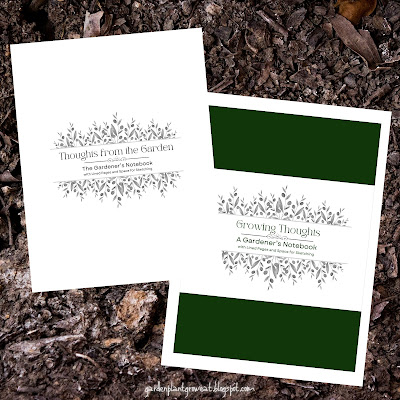The Wildflower Effect
The Wildflower Effect. Why Every Garden Needs a Touch of Wild!
In a world increasingly curated and controlled, wildflowers offer something refreshingly real—an untamed beauty that does more than just look pretty.
These humble plants play a profound role in organic gardening, supporting pollinators, enriching the soil, and reminding us that sometimes, the best thing we can do in the garden is let nature take the lead.
Their open, nectar-rich blooms provide vital food sources that many cultivated plants simply can’t match.
By planting wildflowers, you create a pollinator haven that directly benefits your fruit and vegetable yields.
And when wildflowers die back, they enrich the soil with organic matter—no synthetic fertilizers required.
They thrive in poor soil, tolerate drought, and return year after year with little intervention.
Not only will they thrive with minimal care, but they'll also offer maximum benefit to pollinators and biodiversity.
Simply loosen the soil, scatter seeds in early spring or fall, and water gently.
Avoid rich soil and over-fertilizing; wildflowers thrive on neglect.
In a world increasingly curated and controlled, wildflowers offer something refreshingly real—an untamed beauty that does more than just look pretty.
These humble plants play a profound role in organic gardening, supporting pollinators, enriching the soil, and reminding us that sometimes, the best thing we can do in the garden is let nature take the lead.
What Are Wildflowers, Really?
Wildflowers are native or naturalized plants that grow freely without human cultivation.Please do not mistake their free-spirited nature for a lack of purpose though...
These plants have evolved in harmony with local ecosystems and can dramatically boost biodiversity in your garden.Pollinator Power
Wildflowers are a magnet for bees, butterflies, hummingbirds, and other pollinators.Their open, nectar-rich blooms provide vital food sources that many cultivated plants simply can’t match.
By planting wildflowers, you create a pollinator haven that directly benefits your fruit and vegetable yields.
Soil Health, Naturally
Their deep roots break up compacted soil, reduce erosion, and bring nutrients up from the subsoil, creating better conditions for other plants to thrive.And when wildflowers die back, they enrich the soil with organic matter—no synthetic fertilizers required.
Natural Pest Control
Want fewer pests? Invite more beneficial insects. Wildflowers attract predators like ladybugs, lacewings, and hoverflies, who help keep pests in check.A biodiverse garden is a balanced one.
Low Maintenance, High Reward Gardening!
Once established, wildflowers require minimal watering, zero fertilizing, and very little effort -- yes, gardening efficiency at its finest.They thrive in poor soil, tolerate drought, and return year after year with little intervention.
Choosing the Right Wildflowers
To make the biggest impact, choose native wildflowers suited to your local climate and soil.Not only will they thrive with minimal care, but they'll also offer maximum benefit to pollinators and biodiversity.
6 standout wildflower choices to consider growing this year:
[FIND WILDFLOWER SEEDS AVAILABLE ON AMAZON BELOW!]
🌸 Echinacea (Coneflower)
A hardy perennial known for its striking purple petals and prominent spiked center, echinacea is more than just beautiful. It’s drought-tolerant, long-blooming, and a favorite among bees and butterflies. Bonus? Birds love the seed heads in the fall. Great for borders or meadow-style planting.🌼 Black-eyed Susan (Rudbeckia hirta)
With its sunny yellow petals and dark brown center, the Black-eyed Susan brings instant cheer to any garden. This native North American plant blooms from mid-summer to fall and attracts a wide range of pollinators. It’s low-maintenance, deer-resistant, and thrives even in poor soil.🐛 Milkweed (Asclepiadaceae)
Best known as the sole host plant for monarch butterflies, milkweed is essential in any wildlife-friendly garden. Its clusters of pink, orange, or white blooms provide nectar to bees and butterflies alike. Once established, milkweed is extremely drought-resistant and adds beautiful vertical interest.🧡 California Poppy (Eschscholzia californica)
This bright orange flower is not only the state flower of California, but a symbol of effortless beauty. California poppies are self-seeding, tolerant of heat and poor soil, and bloom prolifically in full sun. Perfect for wild borders or sunny spots where you want big color with little effort.💛 Coreopsis (Tickseed)
Cheerful and dependable, coreopsis bursts into masses of yellow, orange, or even pink daisy-like blooms. It’s a pollinator magnet and blooms all summer long with deadheading. Tolerant of drought and heat, this is a strong choice for anyone looking to fill space with vivid, bee-loved color.🌺 Bee Balm (Monarda)
With its firework-shaped blooms in shades of red, purple, or pink, bee balm is a showstopper. True to its name, it attracts bees by the dozen—but also hummingbirds and butterflies. It has a sweet, minty scent, and both the flowers and leaves are edible (often used in herbal teas). Plant in full sun to part shade for a pollinator party.Starting Your Wildflower Patch
You do not need a meadow to grow wildflowers—try a border, raised bed, or even containers!Simply loosen the soil, scatter seeds in early spring or fall, and water gently.
Avoid rich soil and over-fertilizing; wildflowers thrive on neglect.
The Aesthetic Appeal of Wildflowers
Beyond their ecological benefits, wildflowers bring an effortless, romantic beauty to the garden.
A splash of wild color among your vegetables or herbs can turn a space from functional... to magical.
By welcoming a bit of wild into your space, you will not only grow a prettier garden—you will also be creating a sanctuary for life, balance, and most importantly, nature!
Add them once, and you will never garden the same way again.
A splash of wild color among your vegetables or herbs can turn a space from functional... to magical.
Closing Thoughts from the Garden...
Wildflowers are the rebels of the garden world—but they’re also some of its greatest heroes.By welcoming a bit of wild into your space, you will not only grow a prettier garden—you will also be creating a sanctuary for life, balance, and most importantly, nature!
Add them once, and you will never garden the same way again.





